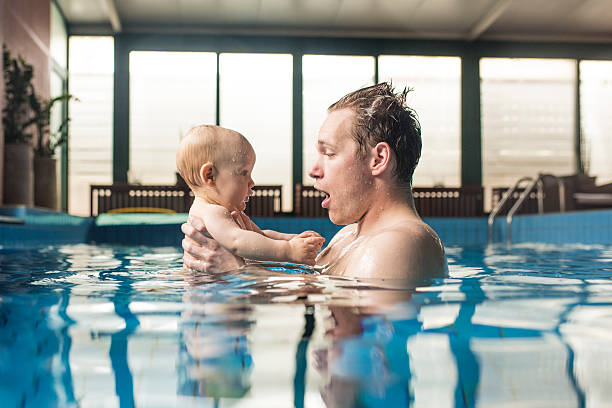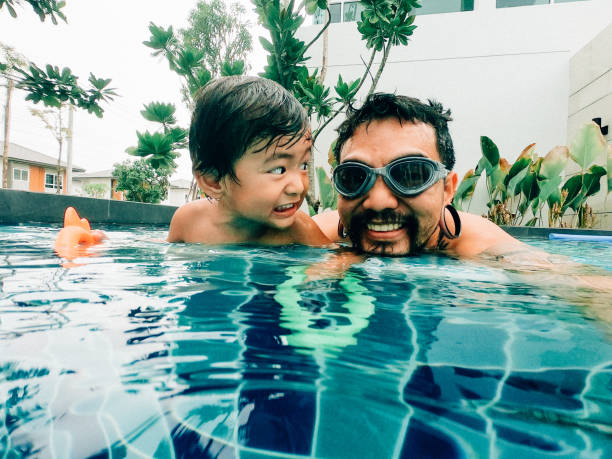At Swimright Academy, we believe parents do not have to spend a fortune on swim lessons. In this article, we will share with you how to teach swim lessons, who should be the first kid’s swim coach and other tips.
You are probably wondering “When can babies start swim lessons?”. According to the American Academy of Pediatrics (AAP), it is possible to start at age 1 – it may help reduce the risk of drowning. Other experts think that the best age to start swimming lessons is 4.
What Should Every Child Be Taught During Swim Lessons?
There are four crucial swimming skills every beginner should master:
- Water comfort – before your little one can go anywhere in swimming, they need not fear water and be able to submerge their face in the water without swallowing it;
- Breathing – teaching little students how to exhale into the water is also essential;
- Floating and gliding – a child needs to be able to get into a floating position on the water (to lie at the surface relaxed) and then return to a standing position with ease; gliding is also a fun activity for little ones – they learn how to travel through the water without any arm, legs, or torso movements;
- Simple leg kicking movements and arm strokes – after the kid has learned to float and glide comfortably, the swim coach can teach the child arm and leg movements.
Once your little one has mastered these basics, congratulations – it can be said they have learned how to swim! Your child can broaden their arsenal anytime by getting confident in deep water and learning more advanced movements.
Why Is It Ideal For a Parent to Be a Child’s First Teacher?

The younger the child, the higher the probability they won’t trust a stranger too easily. That’s why the best swim coach for a 1-2-year-old is their mom or dad.
A calm approach is crucial, especially if the little one is frightened. If the parent is relaxed and is having fun, chances are high the child will too.
You will need to use equipment such as arm bands, a swimming vest, and goggles.
If you manage to make the learning process playful, it’s a success guarantee. So the more games and fun exercises you use, the better.
For example, a fun way for a child to learn to breathe in and out through their mouth when swimming is blowing bubbles across the water’s surface.
Safety First
Every parent should remember that safety comes first, so following safety instructions from professionals is vital. Here are some essential safety tips for parents and children:
- Never run near a swimming pool;
- Children should never be left unsupervised in a swimming pool;
- Parents should explain to their kids that holding someone underwater or jumping on each other in the pool is not allowed because it may cause drowning accidents;
- Diving is only allowed in designated areas;
- Parents/caregivers should know CPR and first aid basics.
Ways to Save Money
Teaching your child yourself is, undoubtedly, the best way to save money on swim lessons. But if you are not patient enough to be your kid’s swim coach, you might want to sign them up for group classes – they are usually cheaper than private lessons. Many swim schools, including Swimright Academy, offer discounts for loyal customers. Choose what works best for you.
And last but not least, if you have been asking yourself “How many swim lessons does a kid need?” here’s the answer: it takes most young children 12 to 30 infant swim lessons to learn to swim well. Remember that every kid is different, so they progress at different speeds.

